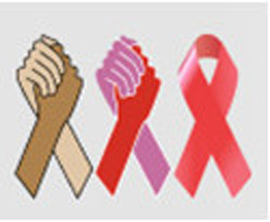Studies also will address HIV prevention among at-risk groups

The National Institutes of Health has awarded funding for a research network devoted to the health and well-being of adolescents and young adults with HIV or at risk for HIV infection. The awards, up to $24 million in 2016, provide for three research centers and a data coordinating center that will make up the Adolescent Medicine Trials Network for HIV/AIDS Interventions (ATN).
"Most new HIV infections occur in young people," said Bill G. Kapogiannis, M.D., network co-director and medical officer at the Eunice Kennedy Shriver National Institute of Child Health and Human Development (NICHD), the NIH institute providing much of the funding for the awards. "Many in this population go a long time before they find out they have HIV and often do not get the care they need."
As a result, Dr. Kapogiannis said, their health may suffer and they risk passing the virus on to future partners. The purpose of the ATN is to get at-risk youth into care, while at the same time offering them the opportunity to participate in research trials that have the potential to improve their health and the health of others. The newly funded ATN centers will conduct studies aimed at preventing HIV infection among youth. They also will seek to enroll HIV-infected youth into treatment studies to improve their health and prevent transmission to others.
"Many at-risk youth are not aware that they need HIV and STI testing or prevention services," said Sonia Lee, Ph.D, network co-director and program officer at NICHD. "ATN studies will focus on helping this population engage with available services and avoid behaviors that increase the risk of HIV infection."
The awards will support three leadership hubs and a coordinating center. Researchers in the network will conduct research through collaborations within the network and with researchers in other institutions. Researchers in each leadership hub will form relationships with clinical sites in urban centers throughout the United States that have expertise in conducting research studies and in providing care for HIV-infected youth.
The principal investigators and the hubs they lead are:
- Mary Jane Rotheram-Borus, Ph.D., University of California, Los Angeles
- Lisa Hightow-Weidman, M.D., University of North Carolina, Chapel Hill; Patrick Sullivan, M.D., Emory University, Atlanta
- Sylvie Naar-King, Ph.D., Wayne State University, Detroit; Bonita Stanton, Ph.D., Seton Hall University, South Orange, New Jersey; Jeffrey Parsons, Ph.D., Hunter College, New York City
Myra Carpenter, Ph.D., and Michael Hudgens, Ph.D., will serve as co-principal investigators for the coordinating center at University of North Carolina, Chapel Hill. The center will serve as the central resource for network communications, cataloging of biosamples, and data management.
Additional funding for the ATN will be provided by the NIH Office of AIDS Research. Other NIH institutes that will collaborate with the ATN include the National Institute of Mental Health, the National Institute on Drug Abuse, and the National Institute on Minority Health and Health Disparities.
###
About the Eunice Kennedy Shriver National Institute of Child Health and Human Development (NICHD): NICHD conducts and supports research in the United States and throughout the world on fetal, infant and child development; maternal, child and family health; reproductive biology and population issues; and medical rehabilitation. For more information, visit NICHD's website.
About the National Institutes of Health (NIH): NIH, the nation's medical research agency, includes 27 Institutes and Centers and is a component of the U.S. Department of Health and Human Services. NIH is the primary federal agency conducting and supporting basic, clinical, and translational medical research, and is investigating the causes, treatments, and cures for both common and rare diseases. For more information about NIH and its programs, visit http://www.nih.gov.

 BACK TO TOP
BACK TO TOP